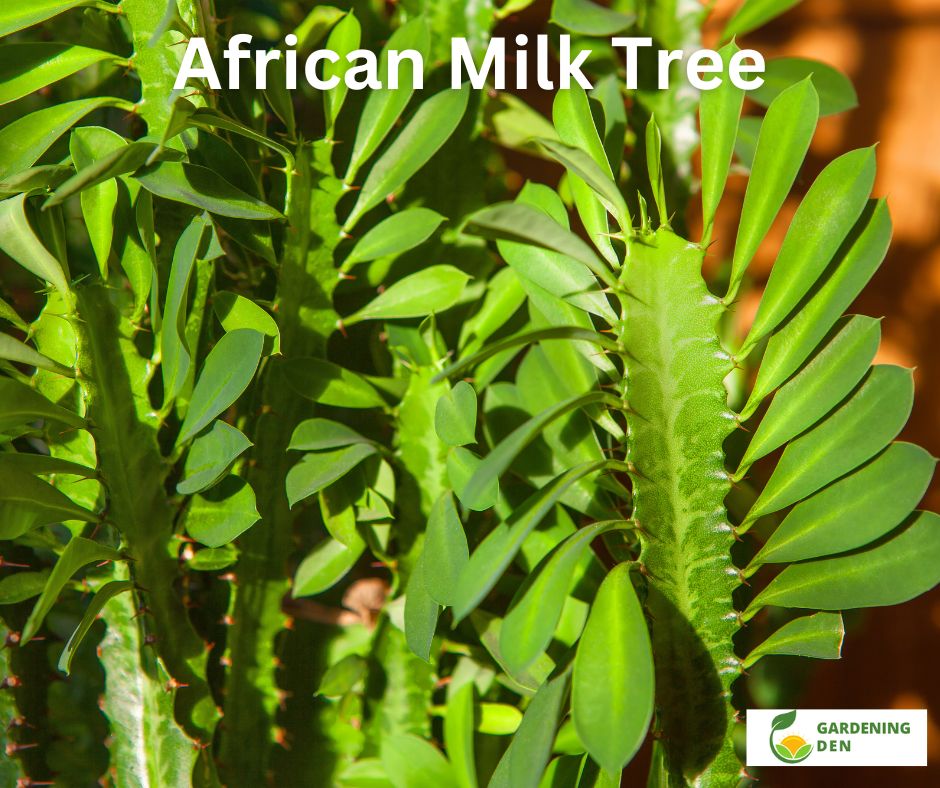In the pantheon of succulents, the African Milk Tree (Euphorbia trigona) stands tall, both in stature and in charm. With its striking architectural form and unique milk-like sap, this plant has captivated the hearts of many botanical enthusiasts. Growing an African Milk Tree is akin to nurturing an ancient artifact; it demands respect, admiration, and a modicum of dedicated care. Here, we explore the comprehensive roadmap for cultivating and sustaining this enchanting plant species.
Visualize the African Milk Tree as a sentinel for your garden or indoor space. Its erect, spiky arms can reach up to ten feet in height under optimal conditions, making it a showstopper in any environment. However, like all living beings, it requires specific conditions to flourish and showcase its full splendor.
To embark on the journey of growing an African Milk Tree, understanding its natural habitat is essential. Native to the arid regions of Central Africa, this succulent thrives in bright sunlight and well-drained soil. Mimicking this environment is key to ensuring a healthy plant that stands resilient against the vicissitudes of life.
**The Perfect Pot: Set the Stage for Growth**
Choosing the right pot is akin to selecting a fine suit for a gala; it must fit just right. The African Milk Tree prefers a pot that allows for excellent drainage. Opt for clay or terracotta containers adorned with drainage holes. These pots not only facilitate water runoff but also allow the roots to breathe, preventing root rot—a common nemesis for succulent plants.
Remember, too large a pot may lead to stagnant water, while one too small can restrict growth. Ensure the pot is proportional to the plant’s size, usually a few inches larger than the root ball. As your African Milk Tree flourishes, you may need to repot, providing room for expansion without overwhelming the roots.
**Lighting and Positioning: Where the Sun Dances**
Positioning your African Milk Tree is pivotal for its health. Imagine that it is a star performer requiring ample spotlight. This plant thrives in bright, indirect sunlight, or even direct light for a few hours each day. An ideal location is near a south or west-facing window, where it can soak up the sun’s nurturing rays.
However, be mindful of the seasons. During the warmer months, increased exposure to sunlight is advantageous, but come winter, a gentle reprieve may be necessary. If you notice the plant reaching excessively towards the light, it may signal that it needs a more favorable position or an adjustment in locale.
**Watering Wisdom: The Delicate Dance of Hydration**
One of the most delicate aspects of caring for an African Milk Tree is the watering regimen. In the wild, this plant is adapted to long periods of drought, rendering it resilient but also more susceptible to overwatering. Think of watering as a maestro leading an orchestra; the rhythm must be just right.
Typically, allow the soil to dry out completely between waterings. During the active growing season—spring and summer—water thoroughly but infrequently. In contrast, during fall and winter, reduce this frequency to once every few weeks. Observing the plant closely will guide your watering schedule. Foliage that appears droopy or discolored can signal both over and under-watering scenarios.
**Fertilizing Fundamentals: Nourishment that Counts**
While the African Milk Tree does not feed excessively, a well-balanced fertilizer can enhance its growth and vigor. During the growing season, consider a diluted, water-soluble cactus fertilizer applied every four to six weeks. Think of it as a rich banquet for your succulent. Too much can overwhelm, but just enough encourages thriving health.
Be attentive; fertilization is not deemed crucial during dormancy. Providing too much nutrient during this period can lead to a plethora of issues, including sluggish growth and even root damage. The less you impose upon it during this restful phase, the more it will reward you when the season turns active again.
**Pest Perils: Defending Your Green Guardian**
Every garden has its share of adversaries, and the African Milk Tree is no exception. Aphids, mealybugs, and spider mites may be lurking, eager to siphon off your plant’s vitality. Regular inspections serve as a sentinel’s watch against these infestations. Should you discover unwelcome visitors, a gentle rinse with water or a mild insecticidal soap can often rectify the situation. Consider introducing beneficial insects like ladybugs that will work silently to keep pests at bay.
**Propagation Potential: Sharing the Love**
Should the allure of the African Milk Tree compel you to extend its legacy, its propagation is surprisingly simple. The tree can be propagated through stem cuttings. Let a cutting sit for a few days until it forms a callous at the cut end before placing it in well-draining soil. With patience, it will develop roots and sprout anew, offering an opportunity to share with friends or expand your collection.
In conclusion, growing an African Milk Tree transcends mere gardening; it is an art form requiring knowledge, dedication, and an appreciation for nature’s wonders. Nurturing this unique succulent demands mindfulness akin to tending to treasured artwork. By adhering to these expert growth tips, you can cultivate a remarkable centerpiece that flourishes gracefully in your home, serving as a thriving testament to the power of life itself.





Leave a Comment